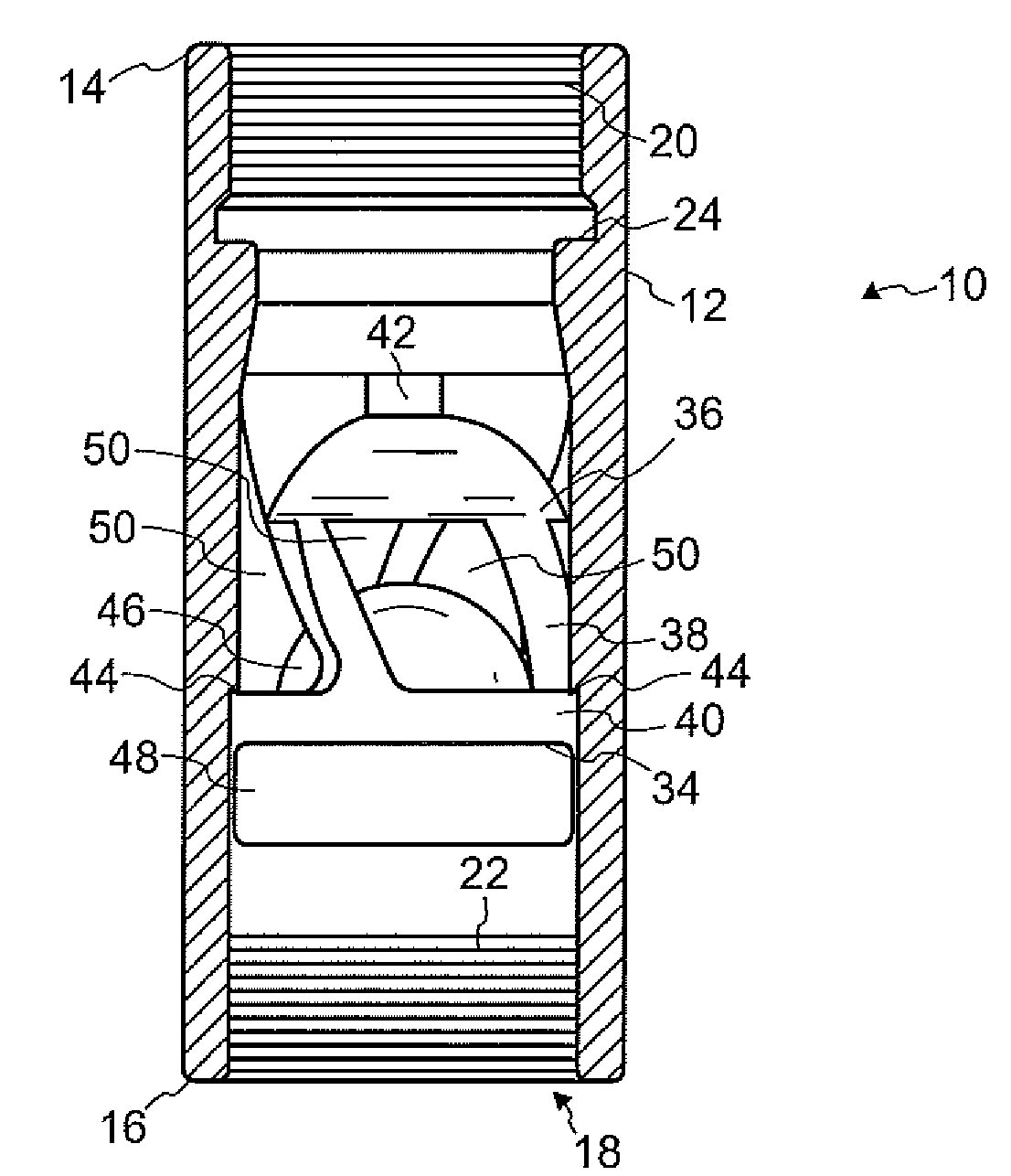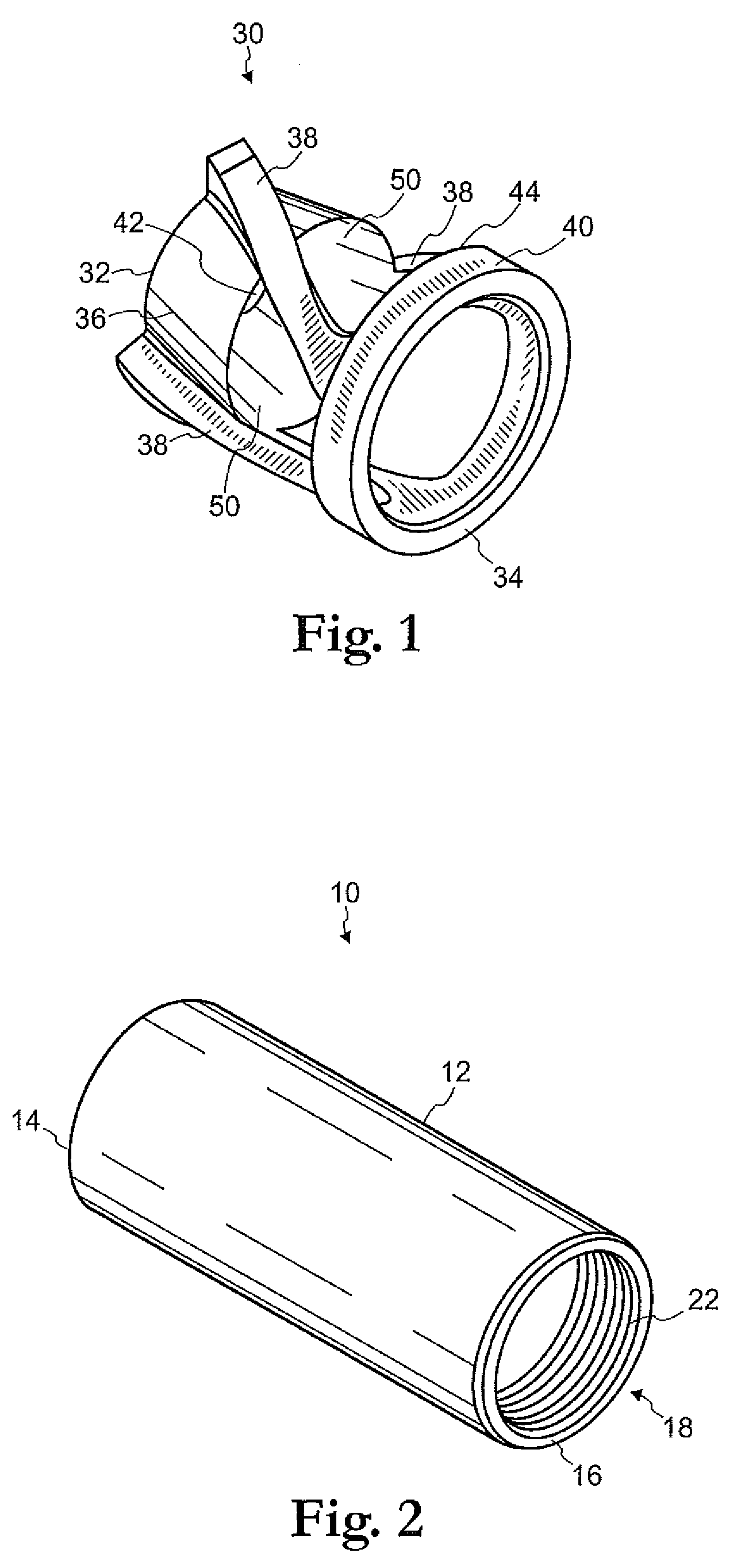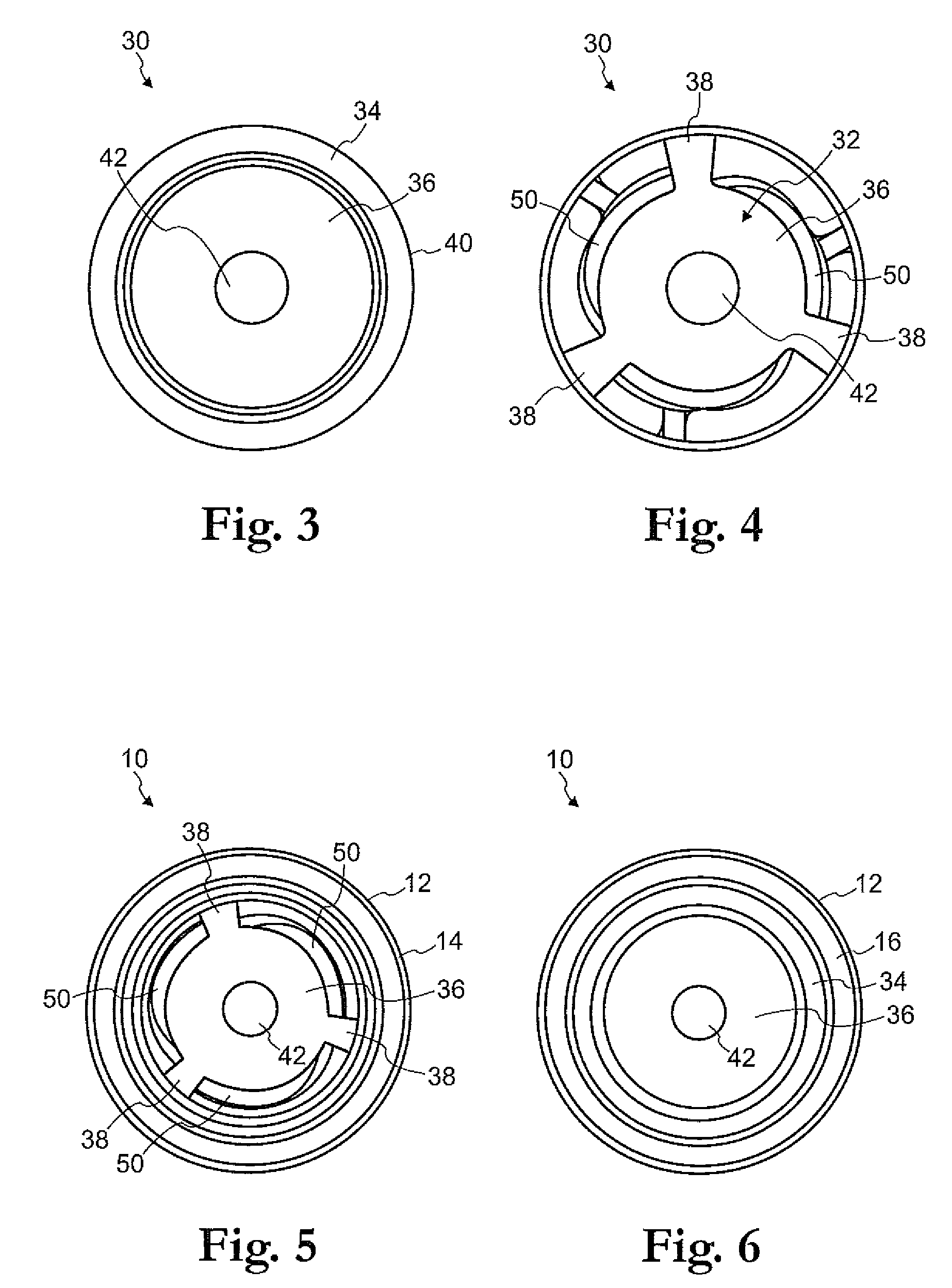Valve cage for a pump
a valve cage and pump technology, applied in the direction of valve housings, functional valve types, transportation and packaging, etc., can solve the problems of promoting the wear and tear of pump components, and affecting the performance of the pump
- Summary
- Abstract
- Description
- Claims
- Application Information
AI Technical Summary
Benefits of technology
Problems solved by technology
Method used
Image
Examples
Embodiment Construction
[0031]Referring first to FIGS. 2 and 8, a valve cage device 10 (“valve cage 10”) consistent with an embodiment of the present invention is shown. The valve cage 10 generally comprises the following basic components: a housing 12, and an insert 30 (as seen in FIG. 8, for example). The valve cage 10 is preferably a one-piece structure and may be composed of a hardened material, such as carbide, an alloy or some other suitable material capable of withstanding conditions present in typical oil well environments. In this embodiment, the valve cage 10 is configured as a traveling valve cage.
[0032]Turning first to the housing 12, the overall configuration of the housing 12 is substantially tubular. A longitudinal channel 18 runs through the housing 12, such that the housing 12 is adapted to receive insert 30 therein. The valve cage 10 includes a north end 14 and a south end 16. Referring to FIG. 7, an interior portion of the housing 12 proximate the north end 14 preferably includes a threa...
PUM
 Login to View More
Login to View More Abstract
Description
Claims
Application Information
 Login to View More
Login to View More - R&D
- Intellectual Property
- Life Sciences
- Materials
- Tech Scout
- Unparalleled Data Quality
- Higher Quality Content
- 60% Fewer Hallucinations
Browse by: Latest US Patents, China's latest patents, Technical Efficacy Thesaurus, Application Domain, Technology Topic, Popular Technical Reports.
© 2025 PatSnap. All rights reserved.Legal|Privacy policy|Modern Slavery Act Transparency Statement|Sitemap|About US| Contact US: help@patsnap.com



